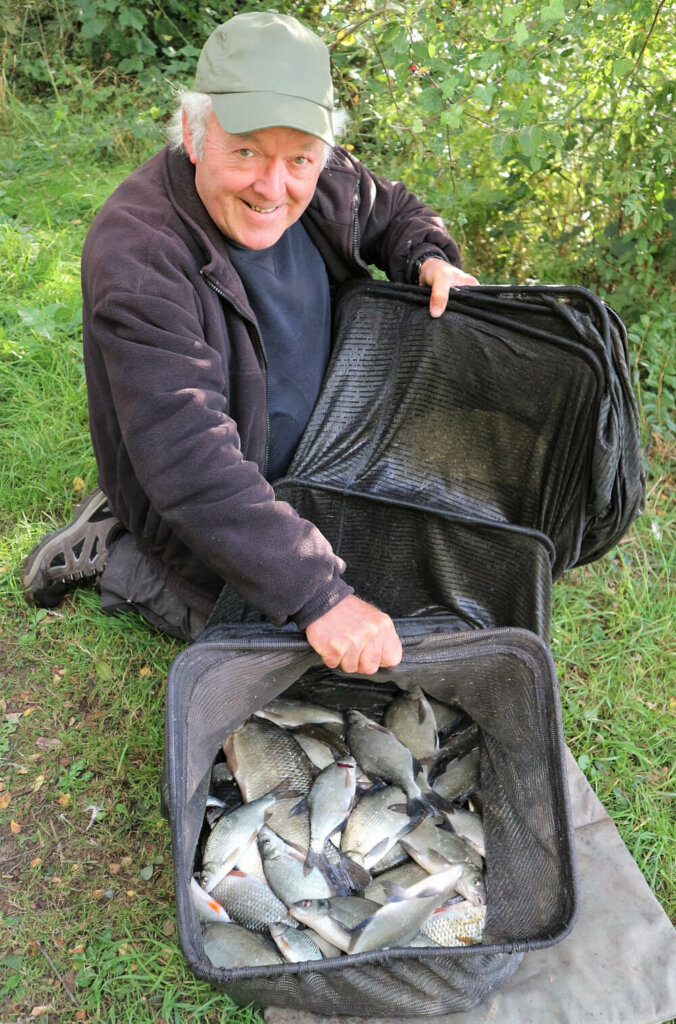Fishing for Skimmers
What and Where
Skimmers are generally silvery up to the 1.5lb mark, after which they begin to turn bronze and become more widely classed as bream. Catching good numbers requires plenty of attention to detail, both tackle and bait wise. Skimmers have notoriously soft mouths, making light pole elastics or soft actioned rods essential. Hook choice is also important to avoid constantly pulling the end tackle out of these fish as they are played in. They often kite to the surface, allowing them to be skimmed in, hence the nickname. It’s rarely easy lining up this species, which can prove to be spooky and extremely fussy. The most productive habitats are canals, drains, slow moving rivers and lakes. Skimmers also happily thrive in carp dominated pools, which is another option, targeting them in this case with a fine tipped insert waggler.

The Art of It
To maximise skimmer potential, everything needs to be well organised, otherwise taking breaks and interrupting effective feeding patterns risks losing them. These fish quickly drift off if you have to keep stopping to find things, or take too long making essential tackle alterations. I arrange my gear so I can get at what I need quickly. A jumbo-sized bait tray helps a lot, keeping anything that might be crucial close to hand. I carefully position my rod so I can drop it on a rest with the handle within easy reach. This allows me to feed with a catapult, or free my hands up to sort something out, with less risk of missing any bites while the tackle is in the water. I also keep reserve bait close by, in case more is needed in a hurry. A spare catapult is a good idea, along with compact boxes of any rig bits that might be required for tweaking things.

Sizing Up
Micro pellets are ideal for attracting skimmers and not too many carp, providing they are fed carefully. Sonubaits 2mm Pro Expanders swell up 50% when lightly doused with water, which makes them heavy enough to catapult as far as maggots and casters. Skimmers love soft expanders, and these sink without any need for pumping. They are also a dull brown colour, which can prove a bonus in not attracting carp, which tend to home in on brighter offerings. Larger 4mm expanders on the hook work well over micros. Normal ones are on the light side, while 4mm Pro Expanders are duller and match in well with their related 2mm size. However, it can take longer for fish to find them over dark and silty terrain. I switch between the two, finding the Pro ones more robust. Red maggots generally bring the fastest response on the hook.
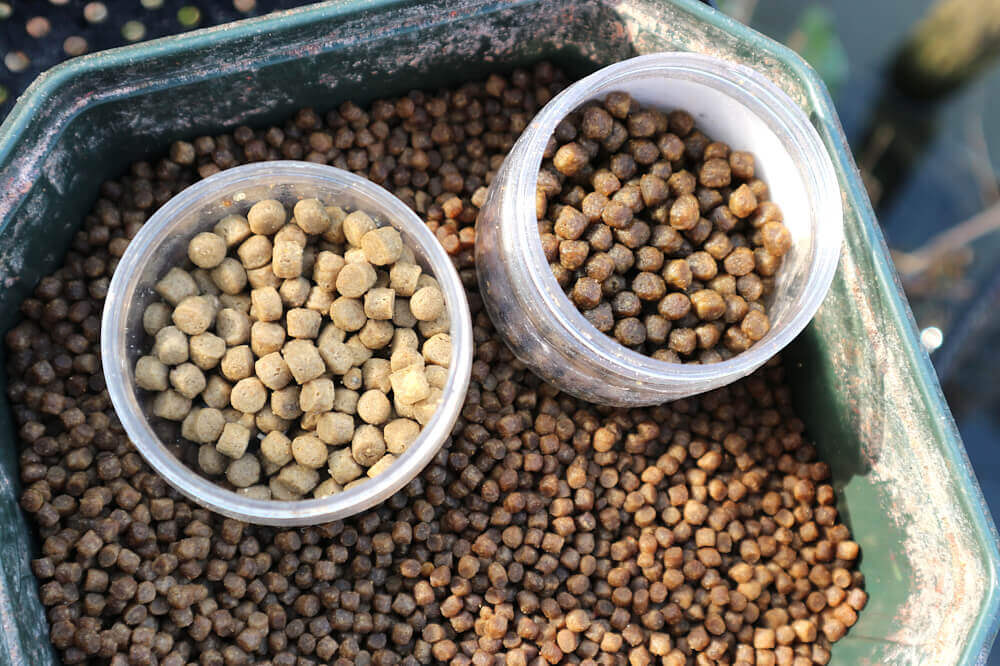
Feeding Right
A powerful catapult is required to punch micro pellets out good distances, so I often use this old Fox carp design, but fitted with a Drennan pouch. It’s a bit brutal for maggots and casters, so I switch to a lighter catty for feeding those, which I put in alternatively to get things moving quicker. Very often maggots or casters will attract rudd, roach, perch and hybrids, which are good weight builders while waiting for skimmers to arrive. I try not to go too heavy with feed pellets, introducing just enough to keep silver fish competing, without overdoing it so carp move in. The same would apply when using pole tackle, either cupping in neat micros in small amounts, or introducing small balls of groundbait well laced with them. Groundbait can also be used to dust up micro pellets that are being loose fed, which adds extra attractiveness.

The Hybrid Factor
Hybrids often intermingle with skimmers, having a more aggressive nature, which means they are likely to turn up first. This one had a hint of blue in its scales and a dorsal similar in shape to that of a roach. Bigger samples fight like crazy, very much like chub. Hybrids are silvery, just like skimmers, when they are young, but they normally turn darker and more bronzed as they pile on weight. A few might remain on the silver side, making them very difficult to distinguish from roach. It’s only their elongated anal fins that give the game away, which can reveal two or three-pound specimen “red fins” to really be imposters. Not that I don’t like catching these interesting fish because their hard-scrapping ways test tackle to its limits. Many skimmer and bream sessions have been capped off perfectly when big hybrids have put in an appearance.
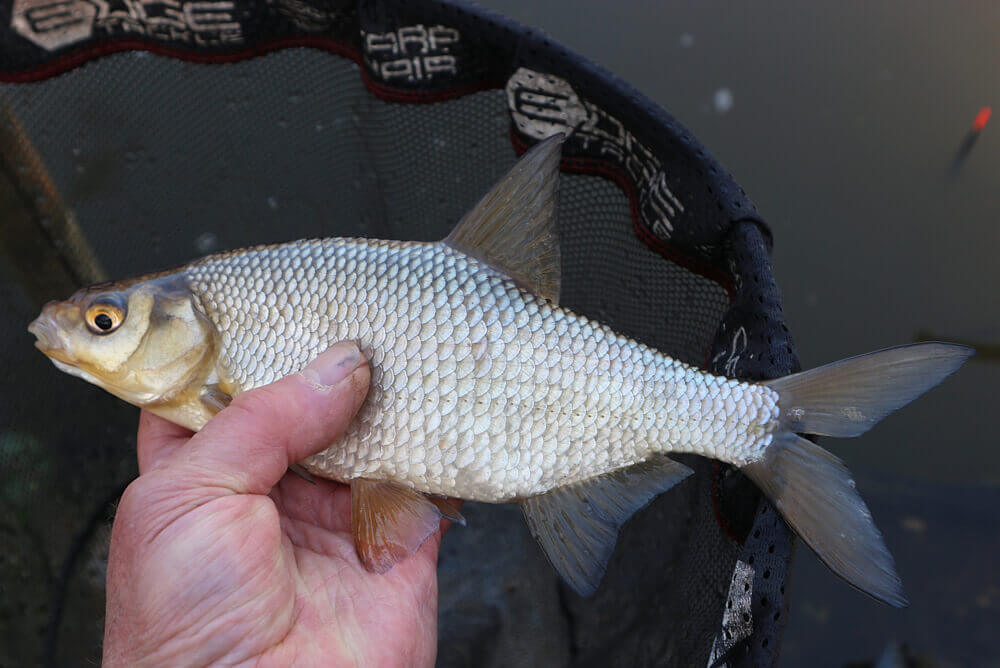
Butting In
No matter how gently a potential skimmer swim is nurtured along, if carp and F1s are present, they are likely to get involved at some stage. Feeding micros is a safer bet than minimal quantities of larger pellets. I’ve tried 4mms and 6mms in small amounts, but the noise they make when hitting the water is like a dinner bell for carp. The same applies if you ladle in large amounts of micros. Small, regular doses are best, but even then, this lively F1 grabbed a red maggot over minimal feed. I use wide gape pellet style hooks, keeping on the small and light side. Black nickel or grey Teflon patterns work well, especially size 18s. They are just big enough for small expander pellets, while not being overlarge for single maggot or caster offerings. When using barbless hook patterns, a slightly in-turned point helps to gain a better hold.

Swim Building
I’ve tried bulldozing my way through carp with a heavy feeding approach, which occasionally turns up odd glimpses of skimmers, but once the former occupies a peg in big numbers they rarely leave. It might take longer to attract skimmers by feeding more carefully, but that’s generally the way to go on silver fish matches on venues like this, where it normally pays off in the end. By initially using baits like maggots and casters, fair weights of roach, rudd, hybrids and perch can be built up, handy while waiting for the target species. Once decent size skimmers arrive, a switch to expander pellets on the hook tends to be more selective at finding them. In this instance, it took a couple of hours of wading through smaller silvers and occasional carp, before a switch to expanders began to regularly find the most sought-after species.
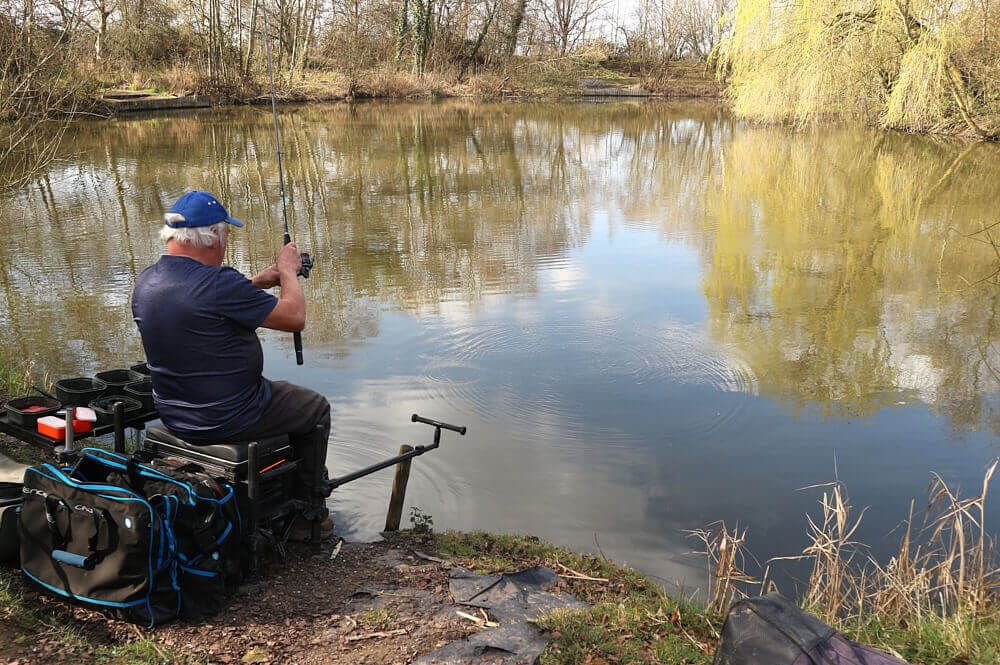
Mint Fish
When perfect examples like this beauty turn up, it makes all the effort worth it. Skimmers consistently provide excellent sport on many venues, while bigger bream are often harder to find, tending to stay very localised. I know many places where proper bream, or slabs as they are often called, rarely budge from one or two well-known hotspots. On the other hand, smaller skimmers can be caught far more widely, which is great from a match fishing point of view. It was certainly competitive fishing that first switched me onto skimmers, realising they could help give many more pegs winning potential. It wasn’t just the waggler that scored well with these fish, also the long pole and sometimes whip tackle in deeper water. Feeder rigs also came into play, including a traditional groundbait approach, along with small pellet designs.

Fine Tips
In this instance, I was using one of my favourite old peacock wagglers, with a modified thin hollow plastic insert. It’s best to have a bit of extra float tip showing, to allow skimmer bites to develop properly. Models with thicker tips cause increased resistance, meaning shy feeders are likely to reject hook baits. Edge Tackle Insert Crystal Clear Wagglers have similar 3.0mm inserts, which are substantial enough to be seen at distance, while being slim enough not to cause too much drag factor. I also use them for this type of fishing, particularly in very shallow water. When pole fishing, I like Edge N5s, which have 1.5mm to 2mm hollow tips. Again, it pays with that method to leave a little extra float showing, to allow delicate skimmer bites time to turn more positive. Being less quick on the strike with skimmers gains a better hook hold.
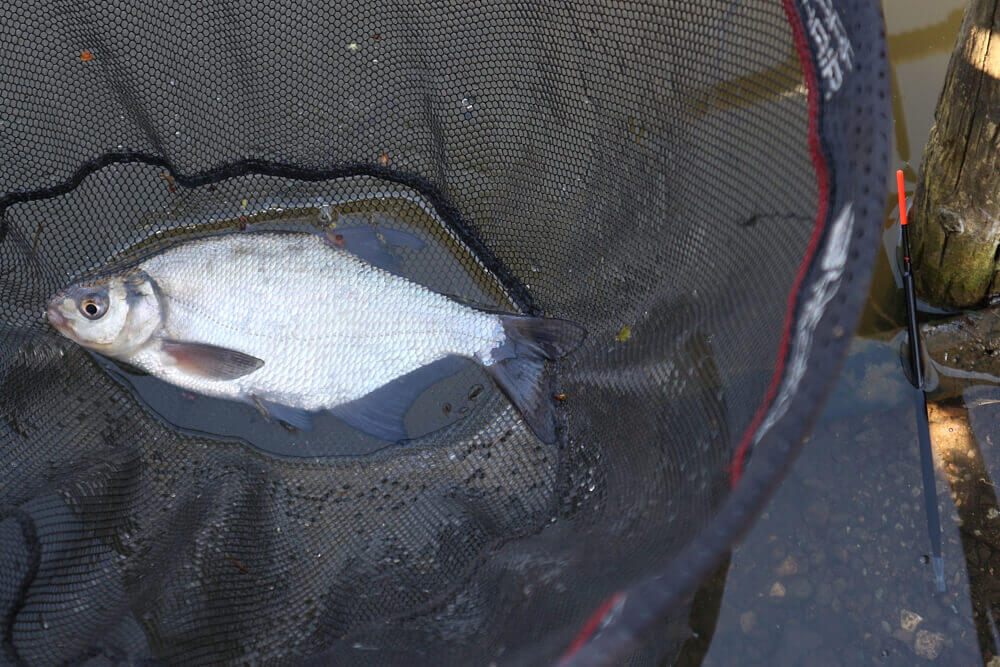
Dealing with Intruders
It always makes me chuckle when trying hard to avoid carp, how many turn up. No matter how careful the feeding is, they still want to have a go. In this case, it was F1s, which are a lively handful on scaled down rigs aimed at skimmers. I’ve even tried not feeding anything and yet still, these critters queue up. I catch less of them on casters, than I do on maggots or pellets, but fewer skimmers result with that approach. I’ve enjoyed many hectic sessions putting back three times more carp than silver fish, hardly feeding anything, experiencing similar results when putting much more in. It’s a proper puzzle to try to get your head around. Carp tend to turn up spasmodically, while I’ve noticed F1s hunt more in packs. It’s sometime easier with the latter to spend 15 minutes caning them out, which can buy a much longer period on the skimmers.
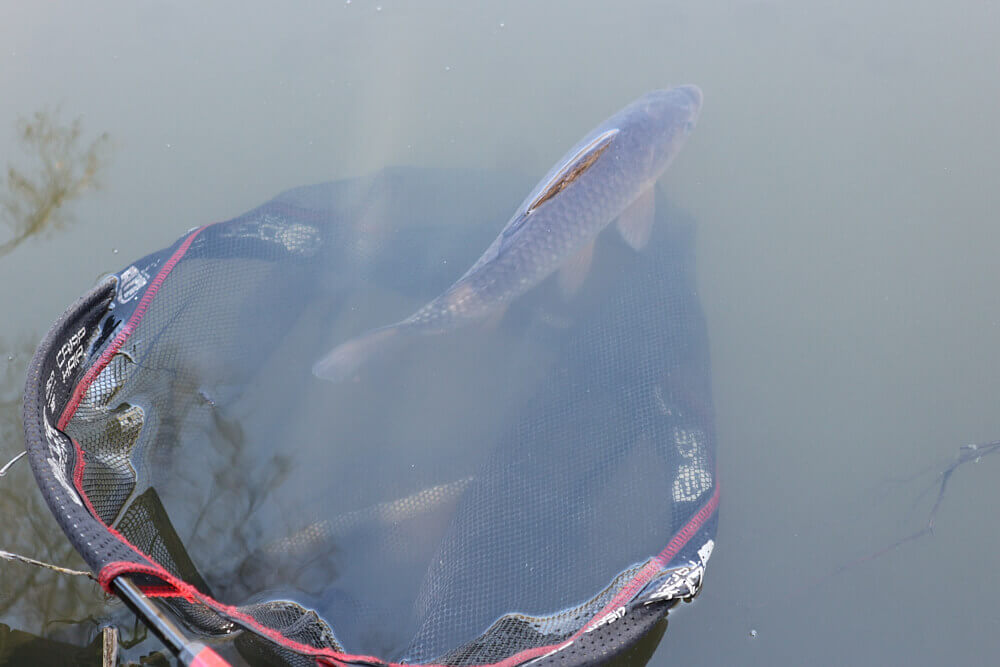
Favourite Rods
I use this Cadence CR10 12ft Match #1 float rod for most of my skimmer fishing with waggler tackle, switching to the equally forgiving CR10 Feeder 11ft #1 for cage, pellet and groundbait work. They are fabulous rods that help a lot to avoid hook pulls on such soft mouthed fish, while retaining positive actions that are responsive on the cast and strike. I’ve seen blanks way more expensive than these that don’t compare. The closest to them are a couple of Hardy samples I was developing many years ago, which would have been more than double what my newer favourites cost. To be fair with Hardy, when they did coarse rods, they went through designated retailers, hence the higher RRPs involved. When Pure Fishing bought the iconic company, I could see Hardy going back to being a fly only brand and knew it was time to leave.

Going South
I moved to Lincolnshire after leaving Hardy country up in the Northeast, discovering some fantastic skimmer sport near my new home. This waggler catch came from the Match Lake at Woodland Waters, feeding micro pellets, switching between maggots and soft expanders on the hook. I also enjoyed similar hauls with pellet feeders, banding hard pellets or wafters. Pete the bailiff at Woodies got me into using helicopter rigs in the depths of winter, which, combined with red maggots, caught surprising numbers of quality skimmers. Now I’m living in fenland, all these methods are being brought back into play. There are plenty of lakes where my micro pellet and waggler approach works wonders, while on the drains and slow-moving rivers it’s more pole or long whip orientated. The skimmer fishing has been amazing and I still love catching them.
